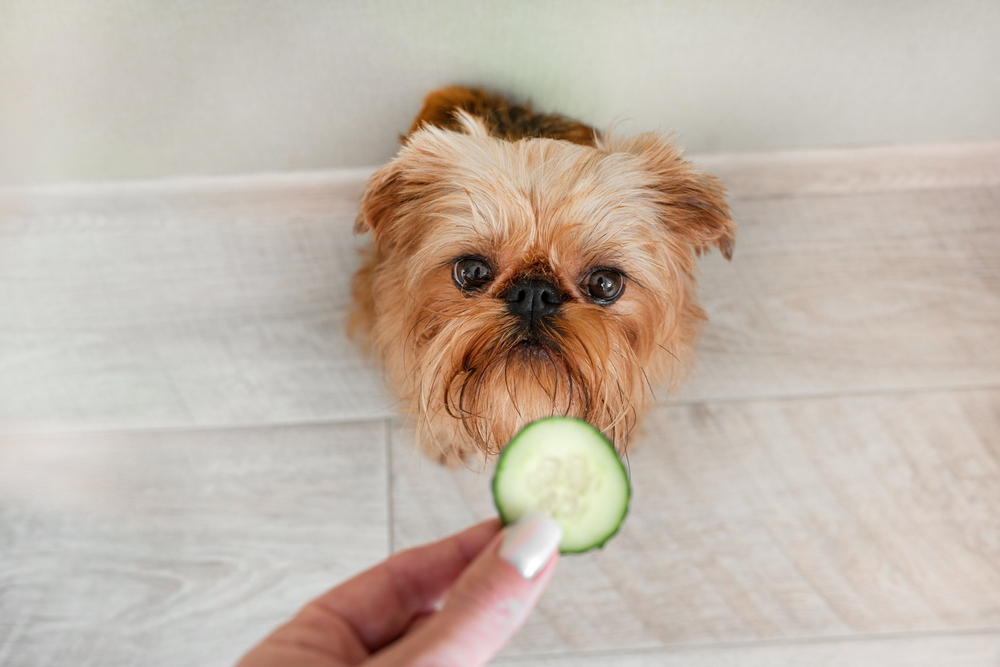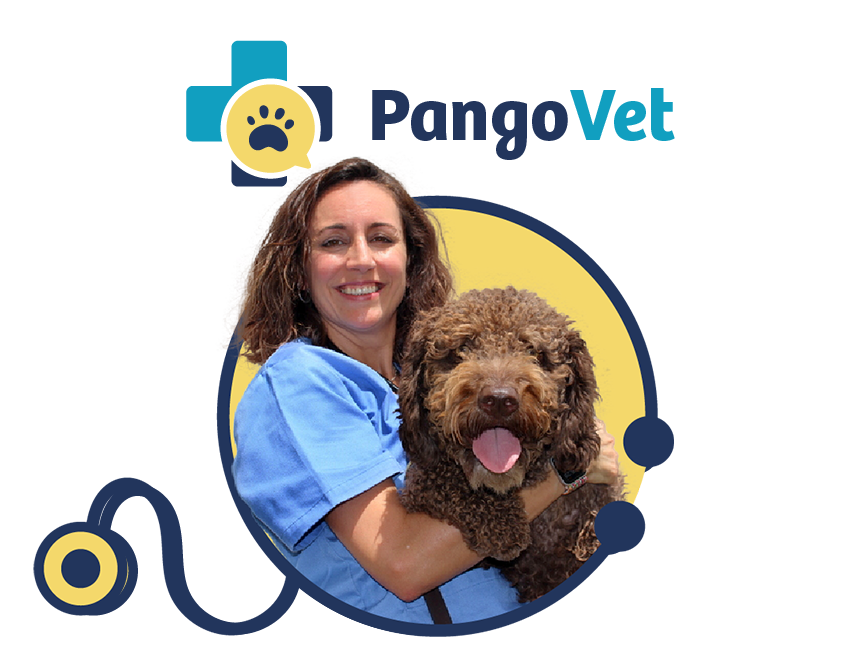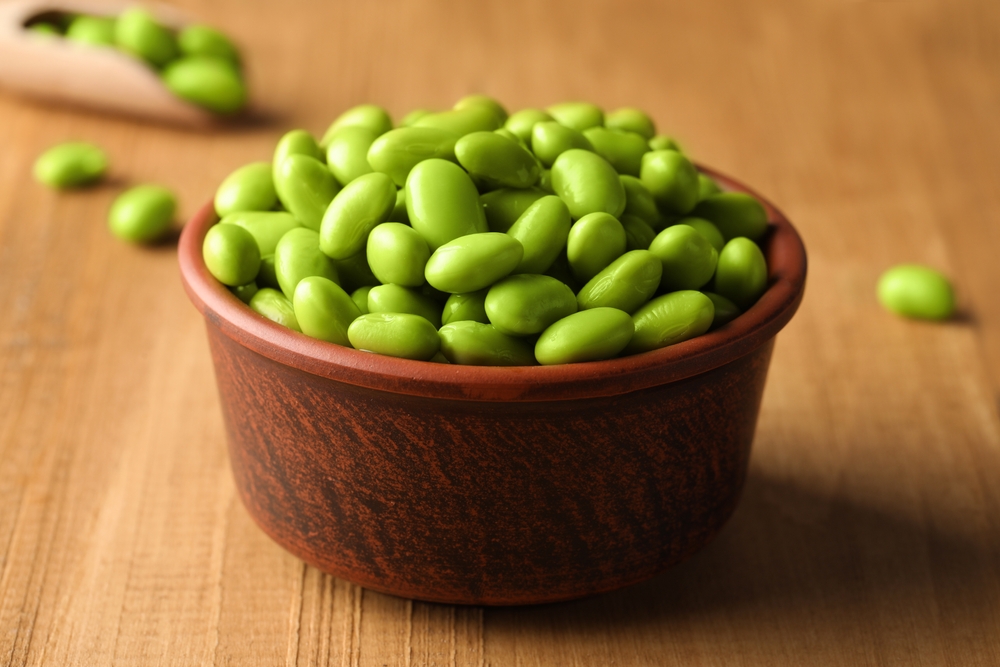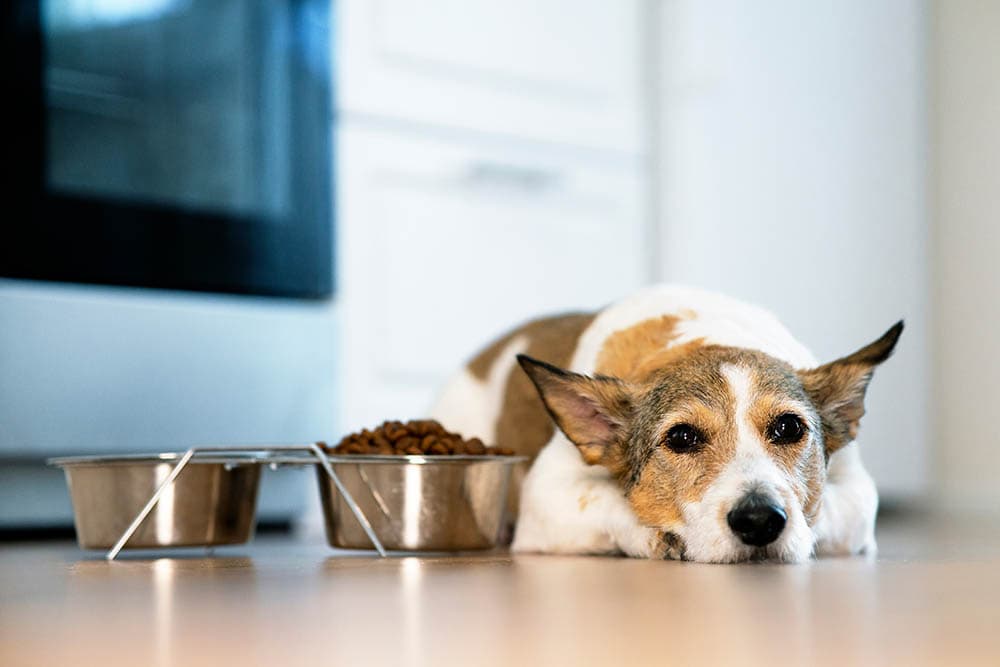Domestication has had a profound impact on our canine companions. They transformed from carnivorous predators into pampered pets. About 95% consider them members of their family. That’s a lot for an animal we once considered a competitor. The gray wolf is the closest ancestor to the one from which these species diverged 27,000 years ago.
Despite millennia of selective breeding, dogs remain facultative carnivores and benefit most from a diet based on meat, fat and animal by-products. As facultative carnivores, dogs can actually metabolize carbohydrates and starches, just as they are found in vegetables. Dogs can eat vegetables, although there are some exceptions.


Why dogs can or can’t eat vegetables
Digestibility is the overriding factor in whether dogs can eat vegetables at all. Basically, all of the macronutrients your dog eats – protein, fat and carbohydrates – are ultimately broken down into a simple sugar: glucose. Glucose remains the primary source of energy used by various cells throughout a dog’s body to grow, repair, divide and function.
However, not all plant substances are the same just because they contain carbohydrates that can be broken down into the aforementioned glucose. This phenomenon has been investigated in studies involving dogs.1 Additionally, dogs have poorer protein digestibility when fed a diet containing plant matter compared to dogs containing animal proteins.2
Dogs process plant matter better than cats in many respects and have lower protein requirements than cats. However, they still do best on a carnivorous rather than omnivorous diet, and have a natural, instinctive affinity for animal foods rather than plants.3
Dogs can eat some vegetables. Vegetables are often used in home-cooked diets to balance dogs’ diets, but they are often found in smaller amounts than the meat and animal organs in the diet. Another concern with vegetables involves the toxicity of some varieties. Sometimes what is safe for us to eat can be toxic or even deadly to your pup.


The benefits and risks of feeding dogs vegetables
Whether dogs can eat vegetables is not always clear, as is the case with chocolate (a big no for dogs). Meanwhile, vegetables can be divided into good, good and bad. One of their benefits is the fiber and other nutrients they provide. For example, carrots are a great addition to your pup’s diet as a low-calorie treat. They are rich in vitamin A and potassium. You’ll even see them in commercial dog foods.
Other safe vegetables include:
- Green beans
- Zucchini
- Cucumber
- Celery
- Pepper
- Broccoli
- Pumpkin
If you have any questions or concerns about adding vegetables to your dog’s diet, we recommend seeking advice from your veterinarian.
💛 🐶 Talk to your vet online without leaving the comfort of your couch!


If you want to talk to a vet but can’t get to one, go to one PangoVet. This is an online service where you can talk to a vet online and get personalized advice for your pet – all at an affordable price!
Dangers of some vegetables
Other vegetables are non-toxic to dogs but may cause digestive problems. Almost all plants found in any grocery store or market naturally contain cellulose. However, dogs (and even cats) are unable to produce the enzyme cellulase, which helps break down cellulose into glucose. Therefore, caution is advised when feeding your dog raw vegetables, as they can cause stomach upset (even if they are not toxic to your dog).


Foods high in oxalates
Oxalic acid is found in many plants. The problem with this chemical is its effect on the magnesium and calcium in the dog’s body. It can bind to these minerals, leading to low levels of them in the blood. The reaction may also cause urinary stones to form. Vegetables that you should avoid giving your dog in large amounts include spinach, beetroot and edamame due to their high content.
Onion, garlic, chives and leek
These Garlic plants they are poisonous to dogs and cats and should never be given to pets in any quantity. While most of us can eat them without problems, it’s a different matter for our companion animals. The problem lies in sulfur-containing compounds that give them their characteristic smell. When an animal eats it, it causes hemolysis, or the breakdown of red blood cells.
It doesn’t matter how prepared they are. The reaction is the same, with symptoms appearing within 24 or more hours after ingestion. A dog does not need to eat much before this specific type of anemia develops. Only 15 to 30 grams per kilogram of body weight can begin the destruction of oxygen-carrying red blood cells.
Unfortunately, there is no antidote. Treatment includes supportive care, including intravenous fluids, blood transfusions, and oxygen therapy. The prognosis depends on how early it is detected.
Symptoms of accidental poisoning include:
- Lethargy
- Loss of appetite
- Stomachache
- Vomiting
- Digestive distress
It is worth noting that concentrated forms, such as powders and dried flakes, are more toxic than fresh vegetables. Nevertheless, the result is the same.


Tips for giving your dog vegetables
Our sobering approach to onions is necessary due to the intensity of its consumption. Vegetables can be a welcome addition to your dog’s diet. However, they are still best used as treats and should not make up more than 10% of your pet’s diet. It’s not that they are bad for your dog; they are simply not nutritionally complete.
Therefore, you can occasionally feed your dog the safe vegetables we mentioned in small portions to avoid the risk of choking. We recommend feeding your pet only one type of food at a time and monitoring its reaction to the new food. Make sure they are unseasoned and unsalted.


Application
Dogs can eat many vegetables without any side effects. You will find many ingredients in commercial dog foods for their nutritional value. We recommend giving your dog fresh vegetables sparingly, as an occasional snack. It is best to serve cooked and unseasoned products, which should be cut into small pieces.
Vegetables can make an excellent, low-calorie addition to your pup’s diet, but it’s best to make sure his main source of nutrition is a complete and balanced diet. For dogs on a home diet including vegetables it’s something you should consult a veterinary dietitian.
Featured image: ephotoshot, Shutterstock






